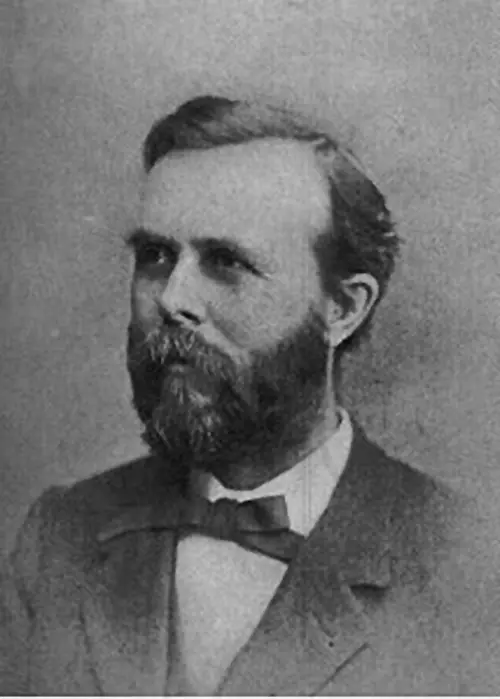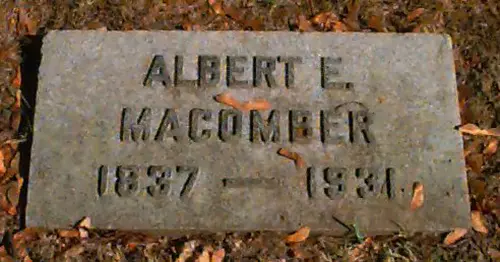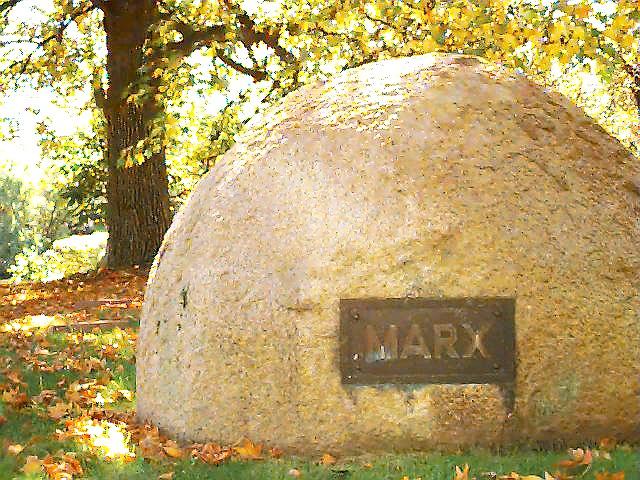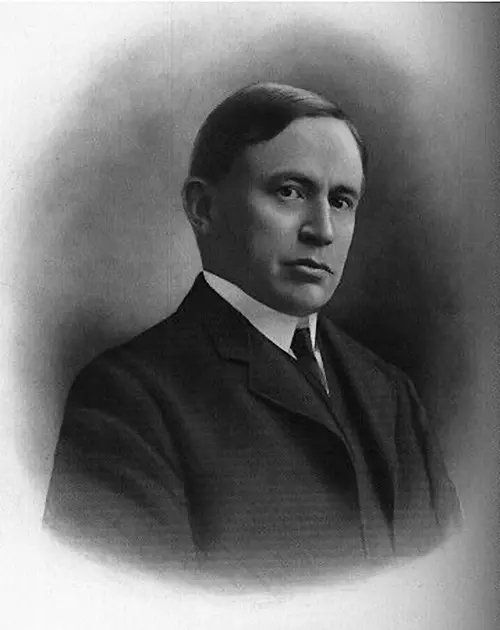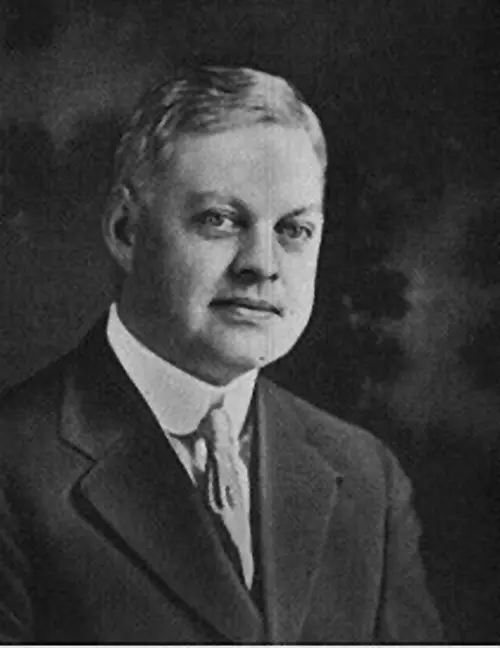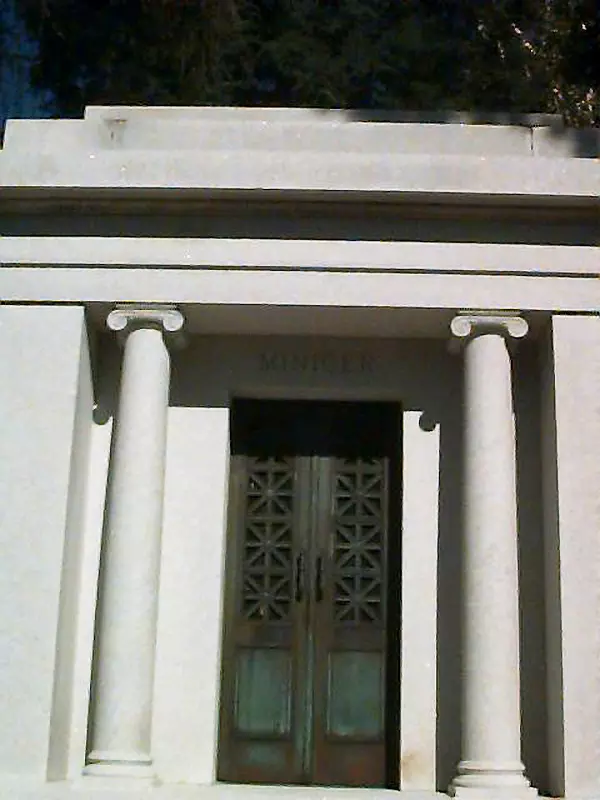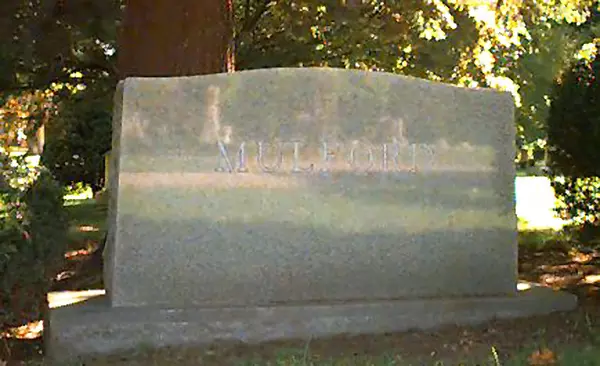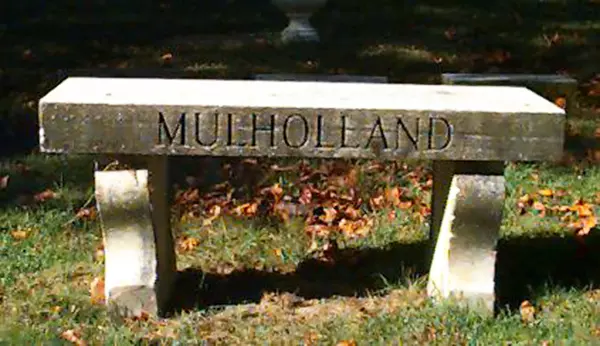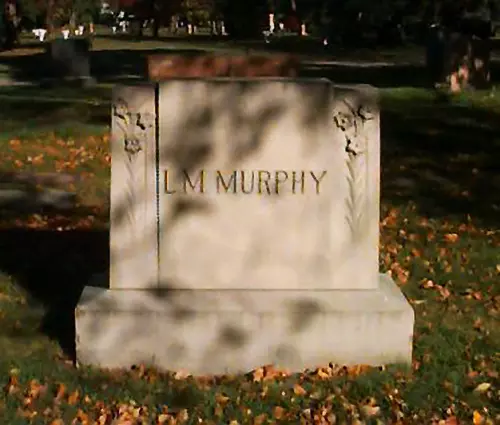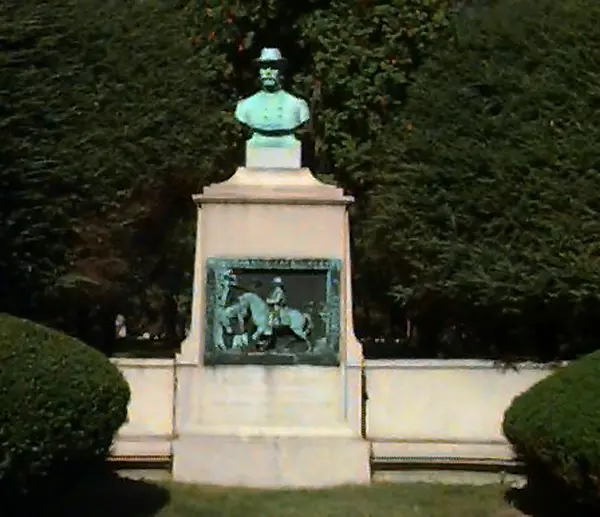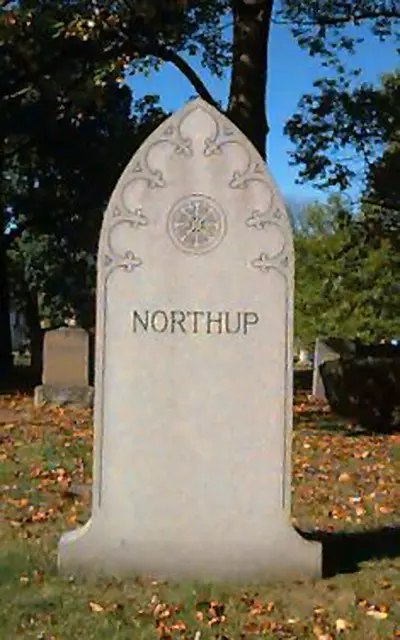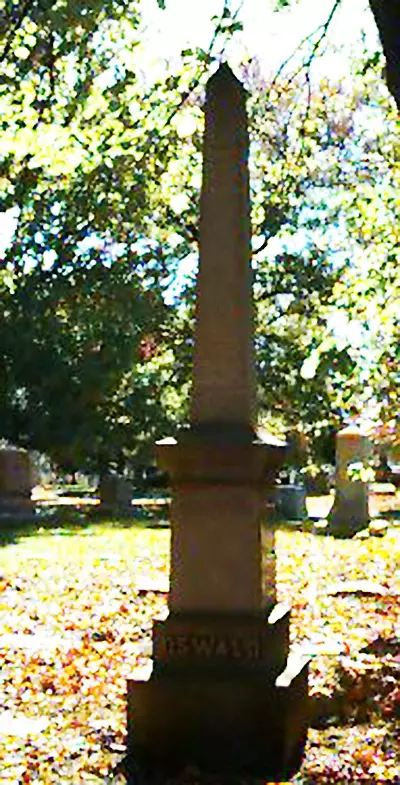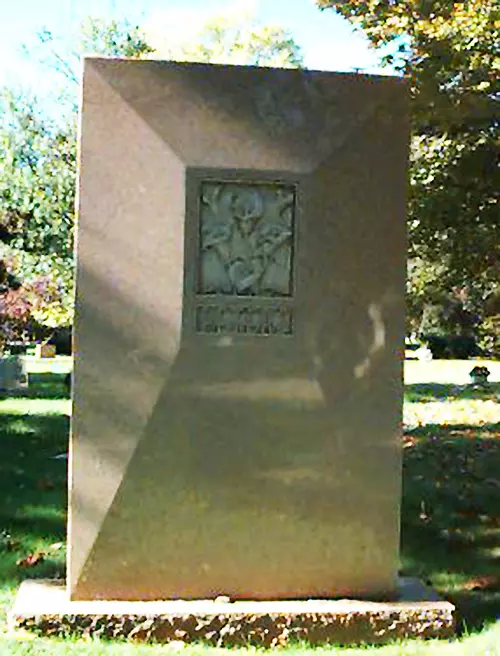Albert E. Macomber - Guido Marx - William V. McMaken - George Stratford Mills - Clement Orville Miniger - Raymon Mulford - Elizabeth Mulholland - Lynn M. Murphy - Colonel Henry. G. Neubert - Albert Neukom - C. Burton Nickels - Charles Northup - John William Oswald - Earle L. Peters - Major Merrill N. Pheatt - John Shearing Pratt
Albert E. Macomber
Albert E. Macomber was born on September 10, 1837, in Taunton, Massachusetts.("Albert E. Macomber, 94 Dies," Toledo Blade, 24 December 1931). Albert, son of John Macomber and Prudence Pierce, received his primary and secondary education in his hometown.[Portrait and Biographical Record of the City of Toledo and Lucas and Wood Counties, Ohio (Chicago: Chapman Publishing Co., 1895), p.236]. At the age of twenty-one, he moved to Lansing, Michigan, where he attended the State Agricultural College. After his graduation in 1860, Macomber entered law school at the University of Michigan in Ann Arbor.Ibid. Following the completion of his studies in 1862,(Toledo Blade, 24 December 1931). Macomber moved to Toledo and went to work as a cashier for Richard Mott at the Toledo Savings Bank.("A.E. Macomber, 94 Dies; Hurt in Auto Crash," Toledo Times, 24 December 1931). After working for Mott, Macomber decided to practice law, opening the firm of Macomber, Moore, and McDonnell with E.D. Moore and S.J. McDonnell.(Portrait and Biographical Record of the City of Toledo and Lucas and Wood Counties, Ohio, p.236).
In 1867 Macomber expanded his business interests into real estate and purchased large tracts of land in the southern and eastern parts of Toledo.C.S. Van Tassell, ("Men Who Made Toledo, Albert E. Macomber," Toledo Blade, 29 July 1936). Over a period of several years, Macomber became more involved in real estate and business, leading to several real estate and business ventures including the foundation of The Auburndale Brick Works and the Monroe and Lagrange Street Railways.(Portrait and Biographical Record of the City of Toledo and Lucas and Wood Counties, Ohio, p.236). Macomber was also one of the founding trustees of Woodlawn Cemetery and The Toledo University and Manual Training School.(Ibid). In addition to the above, Macomber assisted Joseph R. Williams in developing the Toledo Blade,(Toledo Times, 24 December 1931). he was a founder of the literary oriented New Century Club in the 1880s, helped to introduce horse-drawn street cars to Toledo, founded the First Unitarian Church, and was a member of the Toledo Library Association.(Ibid).
In 1871, Macomber married Sara S. Smith of New York City, and the couple had two sons, Irving E. and Franklin S.(Portrait and Biographical Record of the City of Toledo and Lucas and Wood Counties, Ohio, p.236). The sons became partners in the family business A.E. Macomber & Co. in 1897.(Van Tassel). This had been founded as a business and real estate firm in 1882.(Portrait and Biographical Record of the City of Toledo and Lucas and Wood Counties, Ohio, p.236).
Macomber retired in 1902("A.E. Macomber Dies of Injuries," Toledo News Bee, 24 December 1931). and died on December 22, 1931 from injuries he sustained when struck by a car at the corner of Madison Avenue and Twenty-Third Street on December 19, 1931.(Ibid). He was cremated and his ashes were put in the Macomber family lot at Woodlawn cemetery.(Ibid).
Guido Marx
Albert E. Macomber was born on September 10, 1837, in Taunton, Massachusetts.("Albert E. Macomber, 94 Dies," Toledo Blade, 24 December 1931). Albert, son of John Macomber and Prudence Pierce, received his primary and secondary education in his hometown.[Portrait and Biographical Record of the City of Toledo and Lucas and Wood Counties, Ohio (Chicago: Chapman Publishing Co., 1895), p.236]. At the age of twenty-one, he moved to Lansing, Michigan, where he attended the State Agricultural College. After his graduation in 1860, Macomber entered law school at the University of Michigan in Ann Arbor.Ibid. Following the completion of his studies in 1862,(Toledo Blade, 24 December 1931). Macomber moved to Toledo and went to work as a cashier for Richard Mott at the Toledo Savings Bank.("A.E. Macomber, 94 Dies; Hurt in Auto Crash," Toledo Times, 24 December 1931). After working for Mott, Macomber decided to practice law, opening the firm of Macomber, Moore, and McDonnell with E.D. Moore and S.J. McDonnell.(Portrait and Biographical Record of the City of Toledo and Lucas and Wood Counties, Ohio, p.236).
In 1867 Macomber expanded his business interests into real estate and purchased large tracts of land in the southern and eastern parts of Toledo.C.S. Van Tassell, ("Men Who Made Toledo, Albert E. Macomber," Toledo Blade, 29 July 1936). Over a period of several years, Macomber became more involved in real estate and business, leading to several real estate and business ventures including the foundation of The Auburndale Brick Works and the Monroe and Lagrange Street Railways.(Portrait and Biographical Record of the City of Toledo and Lucas and Wood Counties, Ohio, p.236). Macomber was also one of the founding trustees of Woodlawn Cemetery and The Toledo University and Manual Training School.(Ibid). In addition to the above, Macomber assisted Joseph R. Williams in developing the Toledo Blade,(Toledo Times, 24 December 1931). he was a founder of the literary oriented New Century Club in the 1880s, helped to introduce horse-drawn street cars to Toledo, founded the First Unitarian Church, and was a member of the Toledo Library Association.(Ibid).
In 1871, Macomber married Sara S. Smith of New York City, and the couple had two sons, Irving E. and Franklin S.(Portrait and Biographical Record of the City of Toledo and Lucas and Wood Counties, Ohio, p.236). The sons became partners in the family business A.E. Macomber & Co. in 1897.(Van Tassel). This had been founded as a business and real estate firm in 1882.(Portrait and Biographical Record of the City of Toledo and Lucas and Wood Counties, Ohio, p.236).
Macomber retired in 1902("A.E. Macomber Dies of Injuries," Toledo News Bee, 24 December 1931). and died on December 22, 1931 from injuries he sustained when struck by a car at the corner of Madison Avenue and Twenty-Third Street on December 19, 1931.(Ibid). He was cremated and his ashes were put in the Macomber family lot at Woodlawn cemetery.(Ibid).
William V. McMaken
William V. McMaken was born in New York City on February 11, 1857.[Portrait and Biographical Record of the City of Toledo and Lucas and Wood Counties, Ohio (Chicago: Chapman Publishing Co., 1895), p.529]. William, son of Ezekial V. McMaken and Anna C. Smith, arrived in Toledo with his family in 1864.(Ibid). After graduating from high school in 1874 and spending two years at West Point Military Academy, McMaken was employed as a clerk for several years. He was then elected as county recorder in 1886 and was re-elected to that post again in 1889. At the end of his second term as county recorder McMaken entered the real estate business with Charles Fox. In 1893, McMaken once again entered public service when he was elected county treasurer. During his tenure in that position, McMaken also took up the additional duties of city treasurer. Contemporaries of McMaken have described him as "energetic and discriminating, a man of irreproachable honor and unswerving fidelity."(Ibid).
In October 1883, McMaken married Georgie Dorr, daughter of Toledo ex-mayor Charles M. Dorr. McMaken was a prominent member of the Republican party in Toledo, a member of the Sanford L. Collins Lodge No. 396, F. & A. M., the Masons and the Elks.
In addition to his civic and social duties, McMaken also led a distinguished military career. He joined the Ohio National Guard while in his teens and soon rose to the rank of Captain of the Toledo Cadets.W.M. White, ["Military Leader is Stricken," Toledo Times, 13 January 1923]. In 1898, McMaken's unit, the Sixth Ohio Infantry was called to duty in Cuba.(Ibid). Also at this time McMaken was promoted to the rank of Colonel and given command of the unit.(Ibid). Following the end of the conflict, McMaken was appointed as Governor General of Cienfuegos, Cuba.(Ibid). Following his return to Toledo, McMaken was made a Brigadier General in the Ohio National Guard.Ibid. He held this position until 1918 when, after serving his country once again in World War I, he retired from the military due to physical disabilities.(Ibid). McMaken died on January 12, 1923 of heart disease in his home at 2203 Maplewood Avenue.(Ibid).
George Stratford Mills
George Stratford Mills was an architect with a national reputation. He designed many Toledo buildings as well as many across the country; from Boston to San Francisco.[John M. Killits, ed., Toledo and Lucas County, Ohio, 1623-1923, vol.3 (Chicago: S.J. Clarke Publishing Co., 1923), p.387]. George S. Mills was born in London, England, on December 5, 1866, the son of George and Mary Mills. When he was four the family travelled to the United States and settled in St. Louis, Missouri. His father was a journalist who, during his life, served as the editor of two St. Louis newspapers.
George Mills attended St. Louis public schools and then Washington University in St. louis. After he graduated from the University's manual training school in 1884, he decided to pursue a career in architecture.[Charles S. Van Tassel, ed., The Story of Maumee Valley, Toledo, and the Sandusky Region, vol.4 (Chicago: S.J. Clarke Publishing Co., 1929), p.331]. He came to Toledo in August 1885 to teach mechanical drawing at the Scott Manual Training School. After three years he was made superintendent of the school. He left the school in November 1892 when he and a partner formed the architecture firm of Mills & Wachter. The firm closed in 1897 so George S. Mills practiced alone for the next fifteen years.
In 1912 he became head partner in the firm of Mills, Rhines, Bellman & Nordhoff.("George S. Mills," Toledo Blade, 27 December 1939). An honored architect, during his long career he designed such buildings ad the Commodore Perry Hotel, the Ohio Bank Building and the Toledo Safety Building. He was elected vice-president of the American Institute of Architects in 1918-1919. He also served on the Institute's executive committee at that time. In addition, he was president of the State Board of Examiners.(Killits, p.387).
George S. Mills married Alice Baker on November 14, 1894. They had two children. Alice Mills died in September 1913. In 1915 Mills was married to Stella Petersen.Van Tassel, 332. In addition to his work as an architect he was the director of the Ohio Savings Bank and Trust Co.("George S. Mills."). He was also a member of the Chamber of Commerce and the Toledo Club. He served as head of his firm until he died on December 26, 1939 at the age of 73.(Ibid).
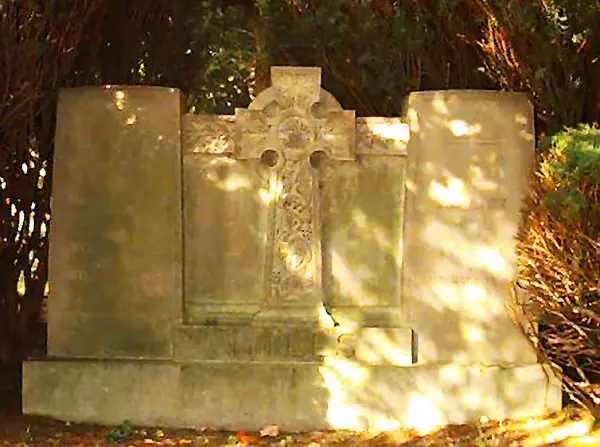 George Stratford Mills's grave
George Stratford Mills's grave
Clement O. Miniger
Clement Orville Miniger was born at northeast, Pennsylvania, on November 11, 1874 son of Samuel and Clementine Miniger. He attended grammar school in that area before moving to Ohio with his family. After graduating from Fostoria High School Miniger attended a pharmacy college in Chicago. After graduating in 1891, he returned to Toledo to start his career as a representative for the pioneer drug company of Walding, Kinnan, and Marvin. For the next ten years Miniger traveled as a salesman throughout northwest Ohio. He gained a reputation for reliability and was known for traveling through snowdrifts during the winter to reach his customers.
In 1902 Miniger acquired properties in Cambridge, Ohio, but maintained his headquarters in Toledo where he preferred to live. His foray into the coal enterprises proved to be successful and so did a paper box factory that he started in the city. But these were trivial accomplishments in relation to his eventual contributions to the automobile boom and the subsequent boost in the city economy.
In 1911, Miniger organized the Electric Auto-Lite Company and became secretary and treasurer. The company manufactured automobile lighting and ignition equipment, and later added battery and farm lighting divisions. After acquisition of the company by John Willys in 1914, Willys made Miniger president and general manager of Electric Auto-Lite. Miniger stayed in this position for several years until failing health forced him to reduce his authority and Royce G. Martin placed him. Electric Auto-Lite expanded to twenty-two plants nationwide by 1944.
Miniger helped add executive, production and sales strength to the Willys-Overland Company. He took charge of production for sixteen months and organized the conversion to help during World War I. In June of 1929, Miniger and some of his associates purchased over 800,000 shares of the Willys-Overland. Auto-Lite quickly affiliated itself with the larger company. Miniger also created one of the first companies to provide electricity and lights for farmers.(Toledo Biography Scrapbook, Local History Collection, Toledo Lucas County Public Library).
Miniger's other business pursuits included serving as president for the United States Light and Heat Corporation, as a director for the Morris Plan Bank, the Commerce Guardian Trust & Savings Bank, and the Air-Way Electrical Appliance Company.[John M. Killits, ed., Toledo and Lucas County, Ohio 1623-1923, vol. 3 (Chicago: S.J. Clarke Publishing Company, 1923), p.167]. He was also an active philanthropist who concerned himself with civic affairs and the beautification of the city. Miniger donated $300,000 for the YMCA to construct a new building. During the Depression, he contributed $85,000 to clear the debts of the financially troubled Women's and Children's Hospital. He also gave money to the Toledo Newsboys' Association and the Toledo Zoological Society.
Socially, Miniger participated in the Masons, Knights Templar, Zenobia Shrine, Toledo Country Club, Toledo and Inverness Club, and the Toledo and Maumee River Yacht Clubs. In 1932, he became Commodore of the Interlake Yachting Association, the highest honor bestowed by the lake yachtsmen. Miniger was an honorary member of the Rotary, the Detroit Athletic Club, and the Question Club of New York. He maintained a long time membership in the Order of United Commercial Travelers.
In 1904, Miniger married Eleanor Couldwell, the daughter of undertaker A.B. Couldwell. The couple had one child, Eleanor Clara. Eleanor Couldwell Miniger actively worked in local charities and headed various women's groups in the city. She died in 1931. Miniger remarried Edna DeVilbiss, widow of famous Toledo industrialist Thomas DeVilbiss, in 1933.
Miniger suffered failing health for some time before he died on April 23, 1944 aged 69 years old. Thousands of people attended his funeral to honor this prominent Toledoan.(Toledo Biography Scrapbook).
Raymon Mulford
Raymon Mulford was born in San Francisco around 1909-1910.("Raymon H. Mulford," Toledo Blade, 9 February 1973.) He graduated from Stanford University in 1931 and the Harvard School of Business two years later. In 1933 he went to work for Owens Illinois (O-I) at a plant in Clarion, California, and quickly rose through the corporate executive ranks. By 1937 he managed O-I glass container plants in Los Angeles and Oakland. He moved to Toledo in 1939 when he was promoted to the vice-president in charge of personnel administration. The next promotion for Mulford came when he was made the general manager of an O-I subsidiary, the Kimble Glass Company in 1953. Three years later he was appointed president of Kimble Glass.
In 1960, Owens-Illinois named him president of their glass container division and a corporate vice-president. Raymon Mulford served as president of Owens-Illinois from 1961 to 1968. His leadership helped to make it the 77th largest company in the U.S. by 1972.("Mulford Rose Quickly After Joining O-I in '33," Toledo Blade, 9 February 1973). Mulford oversaw one of O-I's largest eras of growth. In 1961 sales were $596 million, but seven years later, when Mulford retired, they had reached nearly one billion dollars a year.
Raymon Mulford discussed and promoted Owens-Illinois glass products worldwide. In 1969 he was the first American glass executive to be invited to speak to the Congress of European Glass Federations in London. Two years later he joined ninety other executives from large international corporations and visited Moscow and Leningrad.
In addition to his position at Owens-Illinois, Raymon Mulford served as a director of the New York Stock Exchange, Marathon Oil Company, Allis Chalmers Corporation, and the Ohio Citizens Trust Company. He sat as president of the advisory board for St. Vincent Hospital in Toledo.
Mulford demonstrated a high degree of civic leadership, both locally and nationally. In 1968 he organized the Toledo Chapter of the National Alliance of Businessmen with the goal of finding work for the chronically unemployed. He personally went and listened to inner city youths who complained that their color kept them from finding employment with Toledo businesses. He asked them what the Alliance could do to help them find work. Raymon Mulford also served on the city's Board of Community Relations. Nationally, he was vice-president of the National Cystic Fibrosis Research Foundation. He also became a trustee on the executive committee of President Nixon's National Center for Voluntary Action.
Mulford received many honors, including honorary doctor of law degrees from The University of Toledo and Bowling Green State University. The Toledo Management Association awarded him their highest honor, the Silver Knight Award.Ibid. The day he died he was scheduled to receive the Governor's Award at the Ohio Newspaper Association's awards dinner.
Mulford was a member and at one time president of the Toledo Chamber of Commerce."Raymon H. Mulford." He served as a Toledo Museum of Art Trustee, a member of the National Association of Colored People, the Rotary Club and the Belmont Country Club. Raymon H. Mulford and his wife, Jane, were the parents of two daughters. He died on February 9, 1973.(Ibid).
Elizabeth Mulholland
Elizabeth Mulholland was born in Oil Springs, Ontario, Canada, in 1862. ("Mrs. Mulholland: Former Toledo Market Supervisor," Toledo Blade, 1 February 1952.) In 1870, Mulholland joined the Young Peoples' Temperence Group and, although she was quite young at the time (8 years of age), her association with the group began her long life of club activities. (Marguerite Howard, "Toledo's Women," Toledo Blade 28 November 1939.) In 1900, Elizabeth moved to Toledo and upon her arrival she joined the Women's Educational Club in order to "continue [her] own education for [her] children's sake."("Business Woman and Philanthropist Confesses Politics is Principal Hobby," Toledo Times, 24 May 1937).
After America's entry into World War I, Mulholland helped to organize the 135th Field Artillery Auxiliary. The Auxiliary, which was originally formed as a Red Cross unit, was a group of women whose brothers, sons, and husbands were serving overseas with the 135th Artillery Unit.(Ibid). The group was the first auxiliary in Ohio.(Ibid).
Following the end of the war, Mulholland became a charter member of the Vernon S. McCune unit of the American Legion auxiliary.(Ibid). She was present at the first state convention of the Legion's auxiliary in Columbus, Ohio and also attended the organizations first national convention in Kansas City.(Ibid). Later she became that organization's president.
In 1927, Mulholland was appointed the first woman market supervisor at the Toledo market on Spielbusch Avenue by Mayor William Jackson.(Toledo Blade, 1 February 1952). In that capacity, she was responsible for raising market receipts from $3,000 to $6,000 during her first year as supervisor.(Toledo Times, 24 May 1937).
In addition to her notable achievements at the market, Mulholland was also the first woman to serve on the board of the Epworth Methodist Church. She was a volunteer at Flower Hospital and a member of the board of the Toledo Red Cross.
Mulholland, who remained a popular person throughout her life, died in her home on January 31, 1952, at the age of 90. She is buried in Woodlawn Cemetery.
Lynn M. Murphy
Lynn M. Murphy* was born in 1849 in Kirkwood, Ohio, the son of Dr. John Murphy the county physician. Murphy was a veteran of the Civil War, a criminal lawyer, and the last living member of the Grand Army of the Republic (G.A.R.) post in Maumee.
Murphy first joined the Civil War when he was 15, but his parents arranged for his release. Later on that year he rejoined the army and served with the Thirty-Second Ohio Volunteer Infantry. At the end of his service he was mustered out and attended school at Vermillion and Mt. Union College. In 1877, he was married to Miss Martha Adrian of Gambier, Ohio. Murphy served as a newspaper editor before he was admitted to the Ohio Bar Association in 1879. The next year he moved to Wauseon where he opened a law office. While in Wauseon he was elected mayor three times and served as a county school examiner. In 1891 he moved to Maumee where he lived to the day of his death.
Murphy also maintained an office of his own in Toledo for some years. Later he joined the offices of Brown, Hahn, and Sager. Murphy was familiar in the area as the "Sage of the Maumee." He took on the cases of the weak and poor. Attorneys and laymen would fill the courtroom to beyond capacity to hear Murphy's arguments and keen examinations.
Although he defended many people accused of murder in the first degree, only one received the death penalty. A black man named Jack Harding received the death penalty for the murder of police officer Billy Kress in 1920. The conviction of Harding burdened Murphy until his death because he thought Harding was truly innocent.
Murphy had two hobbies which he actively pursued, reading and gardening. His collection of books numbered into the thousands. His library shelves were filled and more books were stacked on the floor. Gardening allowed him to spend time outside and provided him with the opportunity to beautify his property along the river in Maumee.
L.M. Murphy died in his home at 301 Broadway, Maumee on April 23, 1926 at the age of 77. He was survived by his wife and three children, two daughters and one son, all of whom resided in Maumee.(Toledo Blade, 24 April 1926.)
* the 1995 student project only included the name with the first initials (L.M. Murphy). The full first name was located on the Find A Grave site
Col. Henry G. Neubert*
Colonel Henry G. Neubert was born in 1842 in Toledo. He attended Toledo Public High School.Clark [C. Waggoner, ed. Manufacturing and Merchant Resources of Toledo (Toledo: Blade Printing and Paper Co., 1880), p.759]. He was a senior when he responded to President Lincoln's first call for volunteers. He enlisted as a private in the Fourteenth Ohio Volunteer Infantry. The regiment's length of service was three months, after which it would reorganize and join the Army of the Cumberland. Neubert served under Generals Sherman, Thomas, and others. He quickly moved up the chain of command to Captain. When Chatanooga was under seige, in September 1863, Captain Neubert and 100 of his men were sent to obtain rations from Fort Stevenson, Alabama. They marched eleven days over rugged mountains with only one day's rations. In the course of their trip, they relied on parched corn for food. Twenty of the group's mules died and the men were forced to abandon half their wagons. They persisted and eventually reached Fort Stevenson. After they returned in November, the Fourteenth participated in the assault on Missionary Ridge. In 1864, Neubert and his unit participated in General Sherman's Atlanta campaign and march to the sea.[Clark C., Waggoner, Ed. History of Toledo and Lucas County, 2 vols. (New York: NMonsek 7 Co Publishing, 1888), p.131].
After the war, Captain Neubert was selected by Governor Young as a member of his personal staff. He had achieved the rank of colonel and Chief of Engineers. During the labor riots of 1872, he was ordered to take control of the militia in Toledo. Neubert stopped the riots. After the riots, he was elected to Colonel of the Sixteenth Regiment of the Ohio National Guard. He retained this position until his trip to Europe in 1881 when his resignation was reluctantly accepted. He was a charter member and Post Commander of the Forsyth Post of the Grand Army of the Republic, the banner post of Ohio.(Merchants and Manufacturers Exchange, p.759).
In September 1866, Neubert was elected to the executive committee of the Convention of Soldiers in Lucas County. The organization used political action in support of measures needed to help the government make the transition from war. Colonel Neubert was also a member of the Toledo Soldiers' Memorial Association. This group raised money to build the Memorial Hall building downtown in 1886. He also served on the first trustee committee after completion.(History of Toledo and Lucas County, 261-63, p.353).
After his trip to Europe, he returned to Toledo and Colonel Neubert opened a store that specialized in crockery, glass, china, and cutlery. The store grew and was well known throughout the tri-state area. Colonel Neubert's business was valued at $25,000 to 30,000 a year.(Merchants and Manufacturers Exchange, p.759).
Colonel Neubert died on July 7, 1890. Curiously, Neubert seemed to have laid the plans for his own monument at Woodlawn. A Toledo Blade article two days after his death expressed his desire to be represented by a historical tablet. Colonel Neubert received his wish in the form of a 150-200 pound bust that sits on a stone perch. A bronze relief sculpture on the monument's face commemorates his role in William Tecumseh Sherman's march to the sea.("Civil War Bust is Stolen From Woodlawn Cemetery," Toledo Blade, 17 December 1991).
*Col. Henry G. Neubert only appeared with first inititials in the 1995 student project. The Complate first name is based on theTravels of a Hobgoblin Taphophile
Albert Neukom
Albert Neukom was one of the most picturesque characters in the Toledo building industry. He was a pioneer Toledo cut stone producer and builder, and was the last of the old generation of contractors to be involved in building Toledo.
Neukom was born in Switzerland in 1854, and came to the United States when he was only fourteen. He arrived only a short time before the historic Chicago fire which gave him his first opportunity in the building business. The high demand for building mechanics after the fire sent him west soon after his arrival in the states. He, along with many other young building mechanics, helped rebuild Chicago after its terrible disaster.
In 1877, Neukom came to Toledo after seeing the rapid growth of the city, knowing full well that he could establish himself in the cut stone industry. Within a year, he organized and established the Albert Neukom Cut Stone Company, which despite humble beginnings, became incorporated in 1909 and was a well known institution throughout the Midwest.
Of the many outstanding buildings in the city, it is said that Neukom was most likely responsible for the construction of more structures than any other individual. Among other structures, he was the stone contractor for the old federal building, Waite High School, Scott High School, the old Toledo Club, and the city Courthouse. In addition, he built many of the courthouses in surrounding counties, and also built a number of buildings at the University of Michigan and the Michigan Agricultural College. He worked very hard for several years before retiring and turned over the business to his two sons, Albert Jr. and George.
Along with his two sons, he and his wife, Elizabeth, also had three daughters. He was always interested in civic affairs, but with so little free time, only took office once, that being service director under Mayor Carl Keller.
Mr.Neukom was an active member of the various Toledo Masonic bodies, he was himself a 32nd degree Mason. For many years, he was active in the ranks of the Knights of Pythias, and played a key role in the building of the Knights of Pythias temple.
A series of diseases struck Mr.Neukom and weakened his immune system greatly. He became an easy victim of pneumonia, dying on December 17,1928. He was 74 years old.[(Toledo Biographical Scrapbook, Local History Room, Toledo Lucas County Public Library). See also (NewsBee, "Albert Neukom, Cut Stone Co. Former city builder succumbs to pneumonia," December 18, 1928) and (The Blade, "Death Takes Albert Neukom," December 18, 1928)].
C. Burton Nickels
C. Burton Nickels was an active Republican who was involved with both local and national politics. His political career spanned many years and included small positions such as being member of the Lucas County Board of Elections, member of the county G.O.P. committee, and working on the presidential campaign of Warren G. Harding in 1920.
Nickels was born in Toledo on July 15, 1884.(Toledo Biographical Scrapbook, Local History Room, Toledo Lucas County Public Library). He was the son of Gill and Mavy Nickels. Gill Nickels ran a printing house in Gallion, Ohio. He was also chairman of the Republican County Committee in Crawford County.[Charles S. VanTassel, ed., Story of the Maumee Valley, Toledo and the Sandusky Region. vol.3 (Chicago: S.J. Clarke Publishing Co., 1929), p.651]. C. Burton Nickel's political aspirations may have been sparked by his election as president of his 1902 graduating class at Central High School.(Toledo Biographical Scrapbook). In 1905, Nickels earned his Bachelor of Arts degree from Denison University. This was followed by two years of graduate study in finance and engineering at the University of Wisconsin. In March 1910, he became an assistant sales manager with Toledo's Willys-Overland Company. When he left in January, 1914, Nickels held the position of assistant to the superintendent.
After leaving Willys-Overland, Nickels was appointed Director of Public Service for Toledo. When his term expired, he went to work for the Atwood Auto Company. Atwood eventually was absorbed by Willys-Overland and Nickels again became a salesman for his old company. He left Willys-Overland again in January 1917 and opened the Nickels, Jackson & Larenburg Company that distributed the Sterns-Knight automobile in Northern Ohio. In July 1924, Nickels opened C.B. Nickels & Company, an investment and securities business. The company distributed stocks and bonds, financed corporations, and invested in buildings such as the State Theater and the Commercial Building.(Van Tassel, pp.652-53).
Mr. Nickels' first official political duties began in 1913 when he was involved in the campaign of Carl H. Keller for the mayor of Toledo. The following year, Mayor Keller appointed Nickels to the position of secretary of the service department. In 1916 and 1918, he was active with a group of young Republicans in gaining control of the Lucas County Republican committee and was chosen chairman of the committee that same year. In January 1920, while serving as an executive of the committee, he was elected to the County Board of Education. He served on the board until April, 1928.
Mr. Nickels married Miss Marian Crozier, and they had one daughter, Betty Nickels. Nickles was prominent in many Masonic affairs and was a member of the Barton Smith Blue Lodge, a member of the Shrine and the Scottish Rite. He also belonged to the Toledo Elks Club, the Sons of the American Revolution, and served as president of the Toledo Automobile Club from 1925-26.
Nickels was ill for several weeks before dying on the 18th of July, 1932, at the age of 48. His death was officially attributed to angina pectoris. He is interred in Woodlawn Cemetery.
Charles Northup
Charles Northup was a well respected Toledo attorney who was active in civic affairs and involved himself in projects that would lead to the betterment of the city. The Michigan native was the only son of Dr. and Myron Northup, a well respected family from Lexington, Michigan.
Northup was born in Lexington on November 12, 1869 and attended the local schools in the city. After graduation, he left for Ann Arbor where he attended the University of Michigan. He obtained his law degree in 1889 and moved to Port Huron, Michigan. In Port Huron he opened a law practice with O'Brien and O'Donnell. In June of 1896 he came to Toledo and, with Samuel Kohn, founded the law firm of Kohn & Northup. At the time it was recognized as one of Toledo's best law firms. Northup continued to practice law for more than twenty-seven years.
On November 27, 1903 Northup married Miss Alice Delia Bechelder of Galion, Ohio. Together the couple had four children: Kathryn, John D., Spencer, and Annette. Northup also had one sister, Mrs. Lincoln Avery, who succeeded him in death.
From 1899 to 1903 Mr. Northup served as Assistant City Solicitor. In 1905, he was elected to the position of City Solicitor. In addition he was chief council for the Toledo Baseball Club company as well as a member of its Board of Directors. From 1903 to 1905 he served on the Board of Directors of The University of Toledo. Furthermore, he was a member of the Ohio State Bar Association and the Toledo Bar Association and served as president of the Toledo Bar in 1908 and 1909. To top his accomplishments, he was also the first chairman of the Civil Service Commission of Toledo.[Scribner, Harvey, ed. Memoirs of Lucas County and the City of Toledo, 2 vols. (Madison: Western Historical Association, 1910). Vol. 2, p. 339.
This well-respected attorney was a Mason of high degree and belonged to several other small clubs. He was a member of the Toledo Club, the Inverness Club, the Marine River Yacht Club, the Chamber of Commerce, and many other organizations. After a long illness Northup passed away, only 56 years of age, at his home on May 18, 1925.(Toledo Biographical Scrapbook. Local History Room, Toledo Lucas County Public Library).
John William Oswald
John William Oswald was born in Ashland, Ohio, on October 5, 1842, son of Levi and Caroline Oswald. He attended the public schools in Ashland, served with the infantry during the Civil War, and later became a photographer.
When the Civil War broke out in 1861, Oswald enlisted as a private in the 23rd Ohio Infantry.[Harvey Scribner, Memoirs of Lucas County and the City of Toledo, vol. 2 (Madison: Western Historical Association, 1910), p.406]. This was the same unit in which future Presidents Rutherford B. Hayes and William McKinley served.(Toledo Times, 27 September 1921). It was at first commanded by William S. Rosecrans. Rosecrans later became one of the war's noted generals. The 23rd distinguished itself at the Battle of Antietam in September 1862. Oswald survived the war without major injuries. He was mustered out at the end of July, 1864.
After leaving the service, Oswald trained as a photographist in Cleveland. He was married on May 5, 1865, to Cordelia Coldell. They had three children, a son and two daughters.(Scribner, p.408). In 1865, he co-founded the photography company of North & Oswald in Toledo, Ohio. Oswald's partner, A.C. North, sold Oswald his interest in the business in 1883. At that time W.E. McKecknie became his new partner. The firm's name changed to McKecknie and Oswald. Oswald was a member of the Brush and Lens Club of Toledo.(Scribner, p.407). In 1912, Oswald reached his seventieth birthday and retired from active participation in his company.(Toledo Times).
Oswald was an avid hunter and fisher. He continued to be a serious sportsman until a couple of years before his death. He was a member of the Howell Ducking Club which hunted around Cedar Point. He was also one of the founding members of the famous Castalia Trout Club and was one of the first Toledoans to fish on the Ausable River. In addition, he was a member of the Rubicon Lodge of the Masons and the Grand Army of the Republic. John Oswald died at home on September 26, 1926, at the age of 85.(Toledo Times).
Earle L. Peters
Earle L. Peters was a prominent Toledo lawyer and former city finance director under Mayors Wiiliam T. Jackson and Solon T. Klotz. Born in Toledo in 1881, Peters was a life long resident of the city and played a major role in boosting Toledos economy after the Great Depression.
Peters received his education through the Sylvania school system and went on to study law at the University of Michigan. After receiving his law degree in 1905, Mr.Peters entered the law firm of Kohn, Northup, McMahon and Ritter. He stayed with them for several years before he began to practice with Clifford Whitmore. During the last few years of his life, he moved his office into the National Bank Building, where he practiced with his son Richard and Harley Watkins.
Peters entered the Klotz cabinet on January 1,1933. As a result of the depression the city of Toledo was paying in script and had only $35,000 left in the treasury. Together with Klotz, Peters formulated an austerity program that resulted in $1,500,000 available in the treasury by the time he resigned on August 1,1934. Prior to his resignation, Peters was named to a special national committee to draft a program that would provide federal aid to cities facing financial difficulties.
Furthermore, for forty-five years, Peters was also the director of the Peninsula Telephone Company of Florida, which later became part of the General Telephone System. For thirty years, he was the secretary for the Toledo Stove and Range Company, which went out of business in 1959.
Peters had a wife, Mary, and two children, Richard and Mary. Peters was a member of various institutions including the Toledo Club, Toledo Bar Association, Collingwood Presbyterian Church, and Rubicon Lodge, F&AM. Peters died on the 10 January 1961, at the age of eighty.Toledo Biographical Scrapbook, Local History Room, Toledo Lucas County Public Library.
Maj. Merrill N. Pheatt
Major Merrill N. Pheatt was not only a successful military man but was also one of the pioneers of Toledo radio. Pheatt was born in 1893, and was educated in the Toledo school system.
Following his work as a flier in World War I, Major Pheatt returned to Toledo and began a career in radio. He worked at WPSD radio and was eventually the Executive of Public Relations at the station. In 1942, after the United States entered World War II, Mr.Pheatt left his radio position to join in the war effort. He was commissioned as a lieutenant and rose to the rank of major. He was stationed at Santa Ana, California during the war and remained there until his death.
Major Pheatt was also one of Toledos well-known fire pikers, and kept his boots and helmet ready at Fire Station No.3 which was located on Superior Street. He served as an auxiliary to the regular fire fighters at some of the citys biggest blazes. He showed a keen interest in the fire department rescue squad and often provided new members with their first helmets.
Major Pheatt was also active in many civic enterprises throughout Toledo. Perhaps his most important accomplishment as a civic leader was the construction of the illuminated glass fountain in the Civic Center.
Major Pheatt found time to be a member of numerous organizations including: past president of the Toledo Exchange Club, member of Collingwood Presbyterian Church, the Toledo Post, American Legion, and the aviation committee of the Toledo Chamber of Commerce.
Major Pheatt left behind a wife, Margaret, and a daughter, Peggy. His only son, Merrill Jr., drowned in a canoeing accident in 1938. The fifty-three year old Pheatt died on December 12,1946 after succumbing to a heart ailment which had plagued him for six months. Immediately following his death, he was airlifted back to Toledo to where he was buried at Woodlawn Cemetery.(Toledo Biographical Scrapbook, Local History Room, Toledo Lucas County Public Library).
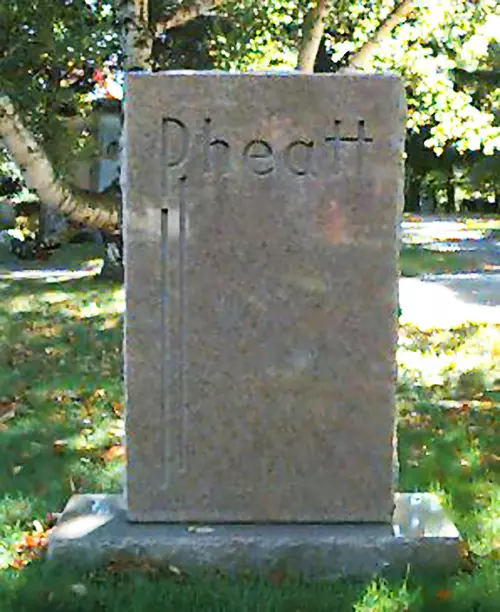 Maj. Merrill N. Pheatt's grave
Maj. Merrill N. Pheatt's grave
John S. Pratt
John Shearing Pratt was a United States prosecutor and judge whose career spanned 45 years. Pratt was born in Toledo on June 5, 1875,(Toledo Biographical Scrapbook. Local History Room, Toledo Lucas County Public Library). the son of Charles and Catherine Pratt. In 1893 he graduated from Toledo High School.[Harvey Scribner, Memoirs of Lucas County and the City of Toledo, vol. 2 (Madison: Western Historical Association, 1910), p.95]. He attended the University of Michigan where he studied law. In June 1897, he received his degree and was admitted to the Ohio Bar Association that same year.(Toledo Biographical Scrapbook.)
Immediately after law school he went to work for the law firm of Swayne, Hayes & Tyler. In 1899, he became a junior member of his father's firm. The firm became known as Pratt, James & Pratt. His father died in 1900 and John became the co-partner in the law firm. One year later, however, U.S. District Court Judge F.J. Wing appointed John as United States Commissioner.[Charles S. VanTassel, ed., The Story of the Maumee Valley, Toledo and the Sandusky Region, vol. 4 (Chicago: S.J. Clarke Publishing Co.,), p.678; Scribner, vol. 2, p.95]. In April of 1904, Pratt was appointed a city judge. In November 1905, he was reelected and served a full term until 1908. At this point he accepted the position of assistant United States attorney for the western division of the northern Ohio District; a position he held until May 1, 1917. At that time he decided to return to private practice in Toledo. He initially practiced alone, but later joined with O.B. Snider and C.A. Seiders.
In 1921, Pratt became a special assistant to the Attorney General. He specialized in mail and bank frauds and, from 1921 to 1934, was involved in major fraud cases. Pratt himself once claimed that the most interesting he ever took part in was the 1934 case when an Iowa farmer, Oscar Harzell, claimed to have bought the rights to the twenty billion dollar estate of Sir Frances Drake, the famous sixteenth century English admiral. Pratt tried the case and Harzell was found to have swindled more than one million dollars from contributors. Pratt ensured a long prison term for Harzell. He resigned in 1934 after investigating the Detroit bank failures and returned to private practice until 1942 when he again went back into federal service.
John Pratt was married to Miss Genevieve Doyle on June 9, 1906. They had one daughter, Miss Alice Doyle Brown. Mrs. Pratt died on January 6, 1912 Pratt was married to Helen Mitchell on June 29, 1918.(Toledo Biography Scrapbook, Local History Room, Toledo and Lucas County Public Library). During World War I, he was involved in rallying support for the war effort. He was chairman of the Four-Minute Speakers of Lucas County and was the director of the Speakers' Bureau of the Liberty Bond drives in Northwest Ohio during the war. In addition, Mr. Pratt was a member of the First Congregational Church, Psi Epsilon fraternity, the Toledo Yacht Club, Toledo Country Club, Toledo Chamber of Commerce. He was a high degree Mason who was well respected in many club circles. The 83-year-old Mr. Pratt died of natural causes on May 13, 1959, and was interred in Woodlawn Cemetery.

